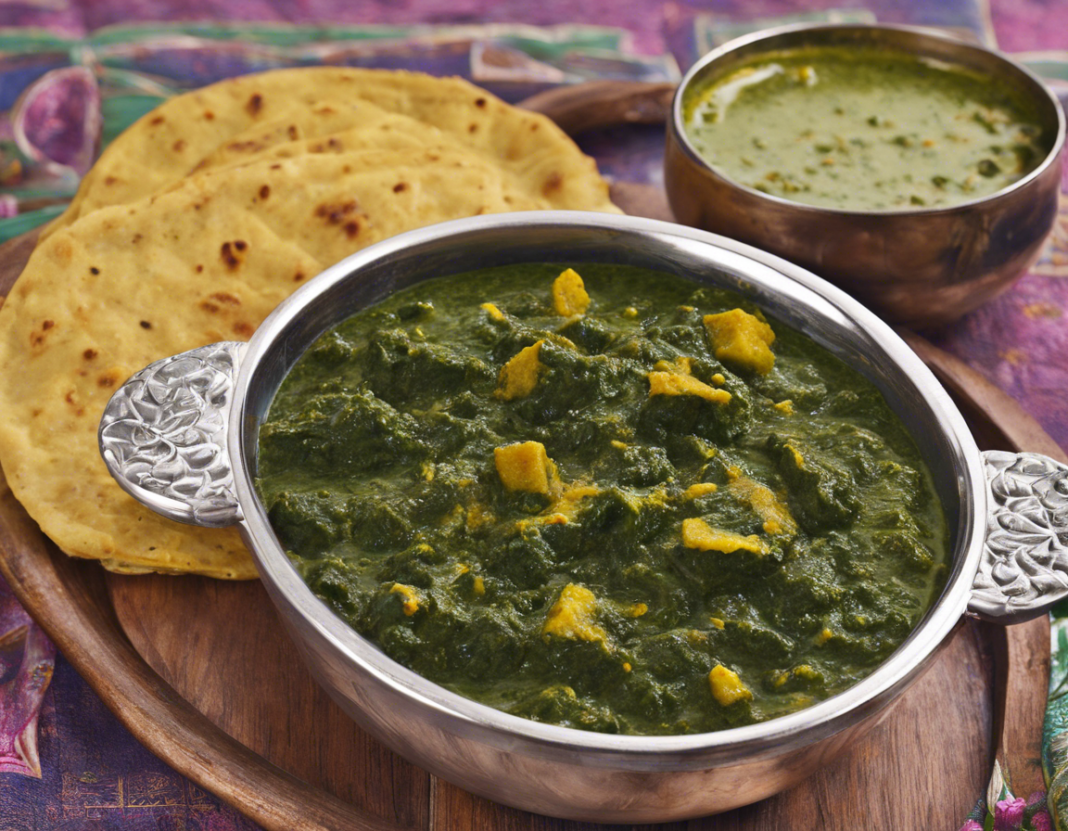India is known for its rich culinary heritage, with each region offering its own unique flavors and dishes. One such dish that stands out for its distinct taste and health benefits is Sarson Ka Saag. This traditional Punjabi dish is a flavorful concoction made primarily from mustard greens, along with other leafy vegetables and spices. Sarson Ka Saag is not only a delicious treat for the taste buds but also packs a nutritional punch, making it a popular choice for those looking to enjoy a wholesome meal.
The Origins of Sarson Ka Saag
Sarson Ka Saag has its roots in the northern state of Punjab, where mustard greens are abundantly grown during the winter season. This dish is a staple in Punjabi cuisine and is often enjoyed with makki ki roti (maize flour flatbread), topped with a dollop of fresh butter. The combination of sarson ka saag and makki ki roti is a match made in culinary heaven, offering a perfect balance of flavors and textures.
Nutritional Benefits of Mustard Greens
Mustard greens, the star ingredient of Sarson Ka Saag, are not only flavorful but also packed with essential nutrients. Some of the key nutritional benefits of mustard greens include:
- Rich in Vitamins and Minerals: Mustard greens are a good source of vitamins A, C, and K, as well as minerals like calcium and iron.
- Antioxidant Properties: The presence of antioxidants in mustard greens helps in combating oxidative stress in the body and boosting overall health.
- High in Fiber: Mustard greens are a rich source of dietary fiber, which aids in digestion and promotes gut health.
- Low in Calories: For those looking to maintain a healthy weight, mustard greens are a great choice as they are low in calories but high in nutrients.
The Recipe for Sarson Ka Saag
While Sarson Ka Saag may seem like a complex dish to prepare, the recipe is surprisingly simple and can be recreated in your own kitchen. Here is a step-by-step guide to making this delectable Indian dish:
Ingredients:
- 500g mustard greens
- 250g spinach
- 100g fenugreek leaves (methi)
- 2-3 green chilies, chopped
- 1-inch piece of ginger, chopped
- 4-5 garlic cloves, minced
- 1 onion, chopped
- 2 tomatoes, chopped
- 1 tsp turmeric powder
- 1 tsp red chili powder
- Salt to taste
- Garam masala for garnish
- Ghee or butter for tempering
Method:
- Preparation: Clean and wash the mustard greens, spinach, and fenugreek leaves thoroughly. Chop them finely and set aside.
- Cooking: In a pan, heat some ghee or butter. Add chopped onions, green chilies, ginger, and garlic. Sauté until the onions turn translucent.
- Add tomatoes: Once the onions are cooked, add chopped tomatoes and cook until they are soft and pulpy.
- Add greens: Add the chopped mustard greens, spinach, and fenugreek leaves to the pan. Mix well and cook on low heat until the greens are wilted.
- Spice it up: Add turmeric powder, red chili powder, and salt to taste. Mix well and cook for a few more minutes.
- Mash and simmer: Using a hand blender or a wooden masher, roughly mash the greens to achieve a chunky texture. Let the saag simmer for some time to allow the flavors to meld together.
- Tempering: In a separate pan, heat some ghee or butter for tempering. Add garam masala and pour it over the sarson ka saag.
- Serve: Sarson ka saag is best enjoyed hot with makki ki roti, a dollop of fresh butter, and some jaggery on the side.
Health Benefits of Sarson Ka Saag
Apart from the nutritional benefits of mustard greens, Sarson Ka Saag offers a host of health benefits, making it a wholesome addition to your diet. Some of the key health benefits of this traditional Indian dish include:
- Boosts Immunity: The antioxidants present in sarson ka saag help in boosting the immune system and fighting off infections.
- Aids in Digestion: The high fiber content of mustard greens aids in digestion and promotes gut health by preventing constipation.
- Heart Health: Mustard greens are rich in potassium, which is essential for maintaining heart health and regulating blood pressure.
- Weight Management: Sarson ka saag is low in calories and packed with nutrients, making it a filling yet healthy option for those looking to manage their weight.
Frequently Asked Questions (FAQs) about Sarson Ka Saag:
1. Is Sarson Ka Saag spicy?
Sarson Ka Saag can be made as per personal spice preferences. You can adjust the amount of green chilies and red chili powder to control the spiciness of the dish.
2. Can I use mustard greens from the supermarket to make Sarson Ka Saag?
While fresh mustard greens are preferred for an authentic flavor, you can use packaged mustard greens available in supermarkets if fresh ones are not accessible.
3. Can I freeze leftover Sarson Ka Saag for later consumption?
Yes, you can freeze leftover sarson ka saag in an airtight container for up to a month. Thaw it in the refrigerator before reheating.
4. Is Sarson Ka Saag gluten-free?
Yes, Sarson Ka Saag is gluten-free as it primarily consists of mustard greens and other vegetables. However, ensure that all ingredients used are free from gluten contamination.
5. Can I make Sarson Ka Saag oil-free?
Yes, you can make Sarson Ka Saag without using any oil. Simply dry roast the spices and temper the dish with ghee at the end for flavor.
Sarson Ka Saag is not just a dish; it’s a culinary experience that encapsulates the essence of Punjabi cuisine. With its rich flavors, nutritional benefits, and cultural significance, Sarson Ka Saag holds a special place in the hearts and plates of those who savor traditional Indian delicacies. Whether enjoyed during the winter season or as a wholesome meal year-round, this delectable dish is sure to tantalize your taste buds and nourish your body from within.




